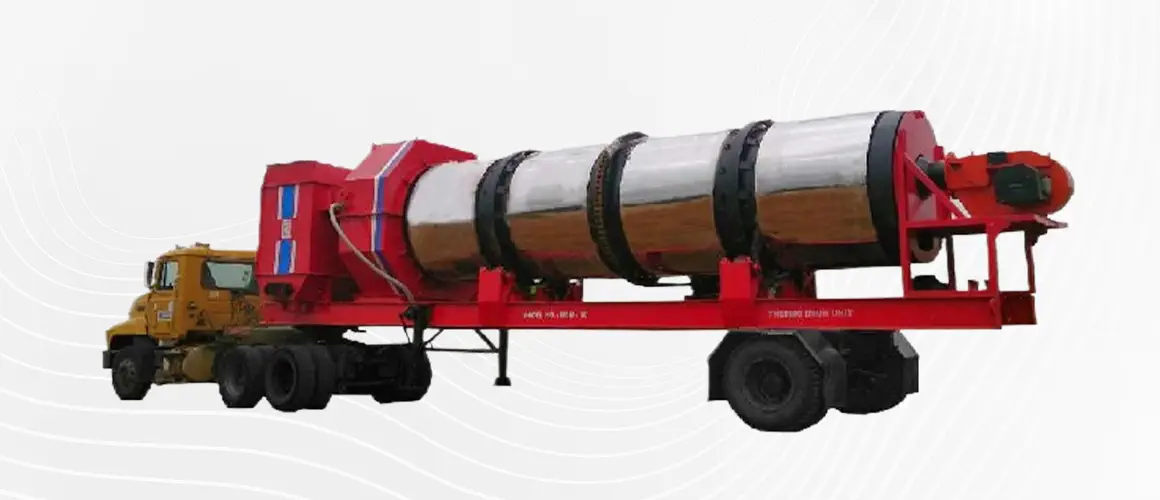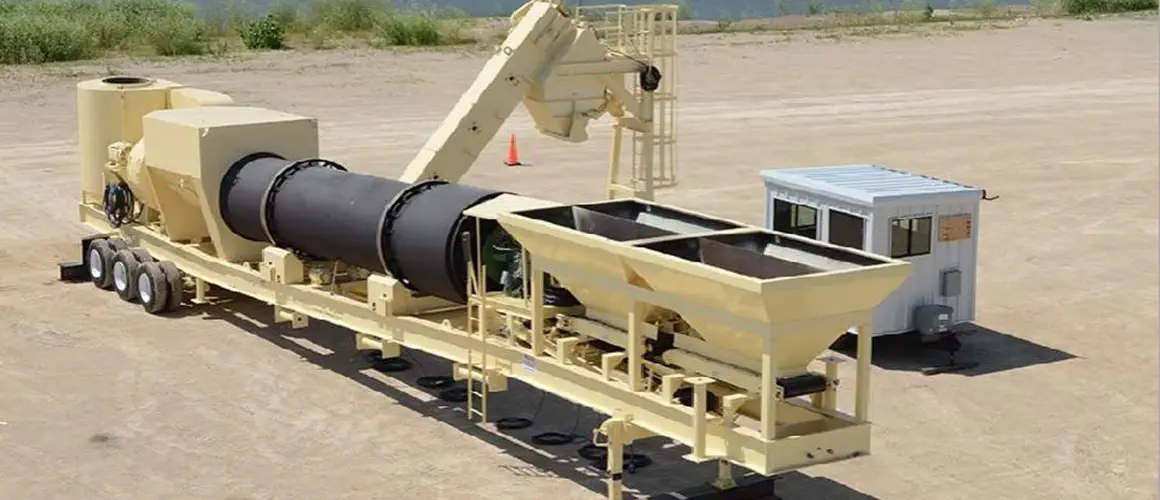All You Need to Know About Asphalt Drum Mix Plant: Overview and Key Components

Let’s explore the key elements of an asphalt drum mix plant and see how they all function flawlessly together. This review will help you better understand the important role that each component plays in providing the smooth surfaces we depend on on a daily basis, regardless of your level of experience.
Are you prepared to jump right in? Let’s continue!
What is an Asphalt Drum Mix Plant?
An asphalt drum mix plant is a highly efficient facility used for the continuous production of asphalt mixtures, essential in road construction and maintenance. In contrast to batch mix plants, drum mix plants smoothly combine aggregates, asphalt binder, and additives while operating on a continuous flow basis. This process is perfect for highways, airports, parking lots, and city roads since it guarantees constant quality and produces enormous amounts of asphalt quickly.
They offer enhanced efficiency and cost-effectiveness due to their ability to produce asphalt quickly, which is crucial for projects with tight timelines. These plants facilitate better quality control by continuously mixing ingredients, resulting in a homogeneous product that meets stringent performance standards. Their application is particularly valuable when large quantities of high-quality asphalt are needed, making them essential for modern infrastructure development.

Key Component of Asphalt Drum Mix Plant
1. The Drum Mixer: The Heart of the Operation
The drum mixer is the core component of any asphalt drum mix plant. It is the central component of the process, where everything is brought together. To mix aggregates and asphalt binders consistently and in accordance with requirements, the drum mixer rotates.
Types of Drum Mixers:
There are two main types you’ll encounter: parallel flow and counter flow mixers. In parallel flow mixers, both the aggregate and hot air move in the same direction, which can lead to some loss of heat efficiency. Counter flow mixers, on the other hand, have the aggregate and hot air moving in opposite directions. This setup not only enhances heat transfer but also improves the overall quality of the asphalt mix.
Key Features to Look for in Drum Mixture:
When choosing a drum mixer, consider factors like capacity (measured in tons per hour), heating mechanisms (like direct or indirect heating), and a design that minimizes material degradation. The right mixer can make a world of difference in production efficiency.
2. Cold Aggregate Bins: The Foundation of Material Storage
The cold aggregate bins are the next in line. For the storage of the raw materials needed to produce asphalt, these bins are indispensable. Well-made aggregate bins guarantee that the materials are arranged and easily accessible.
Configuration:
Aggregate bins can come in various configurations—single, double, or even multiple compartments—depending on your production needs. Each compartment usually has a weighing system for precise measurement of different aggregate types.
Segregation:
Effective segregation prevents contamination and maximizes efficiency. A well-structured cold aggregate bin system is vital for maintaining the quality of the asphalt mix.
3. Drying and Heating Unit: Ensuring Quality
The drying and heating unit is critical for removing moisture from aggregates before they are mixed with asphalt. Moisture can wreak havoc on the quality of the final product, so this step is non-negotiable.
Working process:
Most plants utilize a rotary dryer to keep things moving. This equipment rotates the aggregates while hot air passes through, ensuring that everything is evenly heated and dried.
Temperature Control:
Maintaining the right temperature is crucial. Overheating can damage the materials, while inadequate heating can lead to poor adhesion between the asphalt binder and aggregates. It’s all about getting that sweet spot.
4. The Power Generating Burner System
The burner system is responsible for heating the air used in the drying process. It’s essential for achieving energy efficiency and reducing emissions during asphalt production.
Fuel Options:
Common fuels include natural gas, diesel, and liquefied petroleum gas (LPG). Each has its pros and cons regarding cost, availability, and environmental impact.
Cleaning:
Modern burners often come equipped with emissions control technologies, such as low-NOx burners. This helps you comply with environmental regulations while keeping harmful emissions to a minimum.
5. Asphalt Storage Tanks
Asphalt storage tanks hold the liquid asphalt binder until it’s time to mix. These tanks must maintain the right temperature to prevent the asphalt from solidifying.
Types of Tanks:
You’ll find both insulated and uninsulated tanks in use. Insulated tanks are designed to keep the heat in, which is crucial for maintaining asphalt quality.
Quality Maintenance:
Consistent temperature control in these tanks is vital for achieving the desired viscosity of asphalt, ensuring smooth mixing and application when it’s needed.
6. Control System
The control system is like the brain of the asphalt drum mix plant, overseeing and managing various processes to keep everything running smoothly.
Modern Automation:
Many plants now use advanced control systems that incorporate supervisory control and data acquisition (SCADA) technology. This allows operators to monitor temperatures, flow rates, and mix ratios in real-time, making adjustments as needed.
Data Logging and Remote Monitoring:
These features enhance decision-making and maintenance planning, ultimately improving efficiency. Having your finger on the pulse of operations can make all the difference in productivity.
7. Weighing and Mixing Systems
Accurate weighing and mixing are fundamental to producing top-notch asphalt mixtures. Without precision here, you risk compromising the entire batch.
Accurate Weighing Systems:
Each component, including aggregates and asphalt binder, must be precisely weighed before mixing. Advanced electronic weighing systems ensure that you get it right every time.
Mixing Process:
When it’s time to mix, the heated aggregates and asphalt binder come together at the right temperature and duration to form a homogeneous mixture. The efficiency of this process directly affects the quality of the final product.
Summing it up
If you’re curious about how an asphalt drum mix plant can enhance your operations, we’re here to help! Feel free to drop us a line at info@aaspaequipment.com. We’d love to chat and explore how we can support your asphalt production needs together.
Let’s connect and make your next project a success!
